Having explored the Solar System and dwarf planets in one of the previous materials, this article includes the natural satellites of the Solar System. This is one of the most exciting research areas in astronomy since there are satellites whose size exceeds those of the planets and there are oceans beneath their surface and possibly even life forms.
Let’s start with the satellites of the terrestrial planets. Both Mercury and Venus have no natural satellites, therefore it would be logical to begin with the Earth.
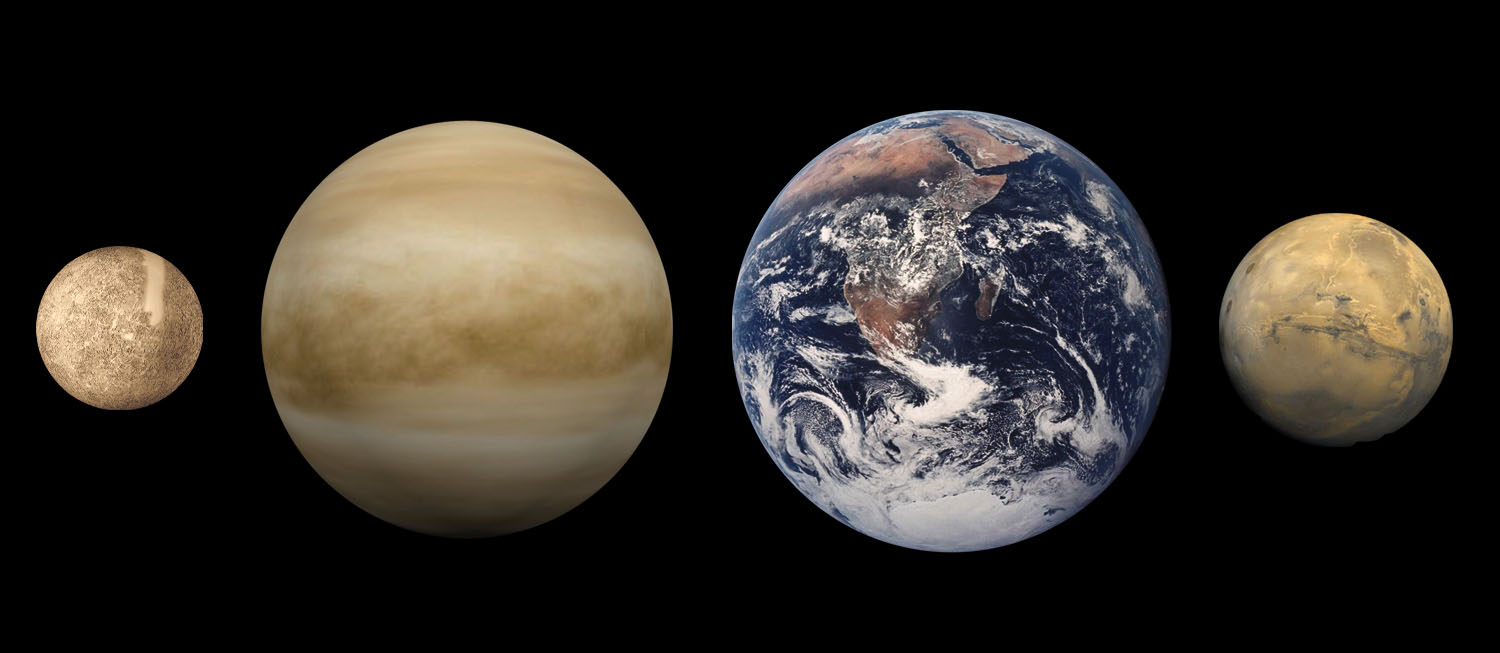
The terrestrial planets: Mercury, Venus, Earth and Mars
Moon
As it is known, our planet has only one satellite — the Moon. It is the most studied cosmic body and also the first which humans could step their feet on. The Moon is the fifth largest natural satellite of a planet of the Solar System.
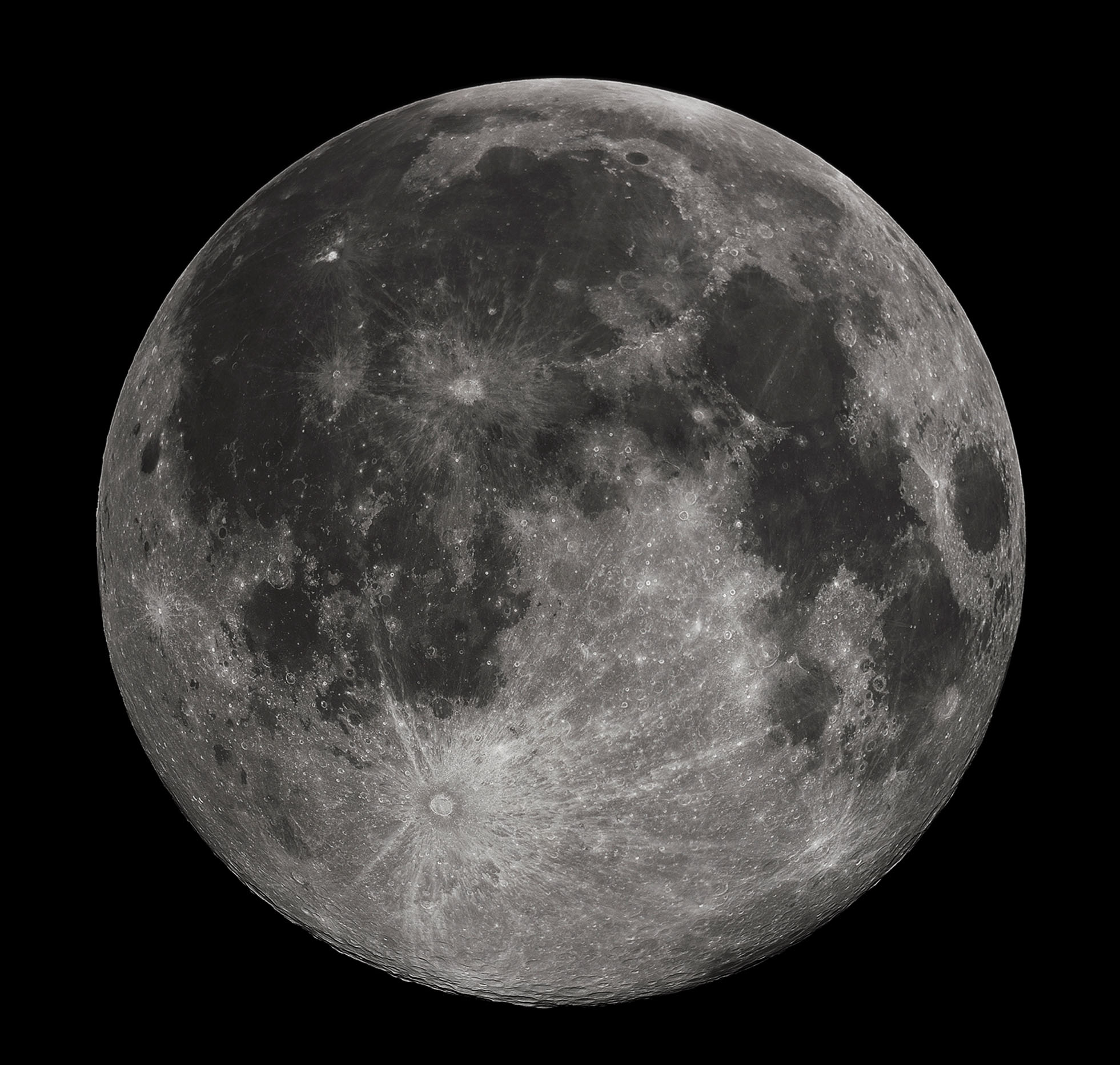
Moon
Although the Moon is considered a satellite, technically it could be considered a planet if it had an orbit around the Sun. The diameter of the Moon is almost three and a half thousand kilometers (3476), Pluto’s diameter, for example, is 2374 km.
The Moon is a member of the Earth-Moon gravitational system. We already wrote about another such tandem in the Solar System — Pluto and Charon. Although the Earth’s satellite mass is not great and equals to just a little more than a hundredth part of the Earth’s mass, the Moon does not orbit around the Earth — they have a common center of mass.
Can the Earth-Moon system be considered a double planet? It is believed that the difference between the double planet system and the planet and a satellite system is in the arrangement of the center of mass. If the center of mass is not located under the surface of one of the objects of the system, then it can be considered a double planet. It turns out that both bodies rotate around a point in space which is situated between them. According to this definition Earth and Moon are a planet and a satellite, while Charon and Pluto — a double dwarf planet.
Since the distance between the Earth and the Moon is constantly increasing (the Moon is moving away from the Earth), the center of mass, which is now under the Earth’s surface, will move over time above the surface of our planet. But it is a rather slow process and the Earth-Moon system could be considered a double planet only after billions of years.
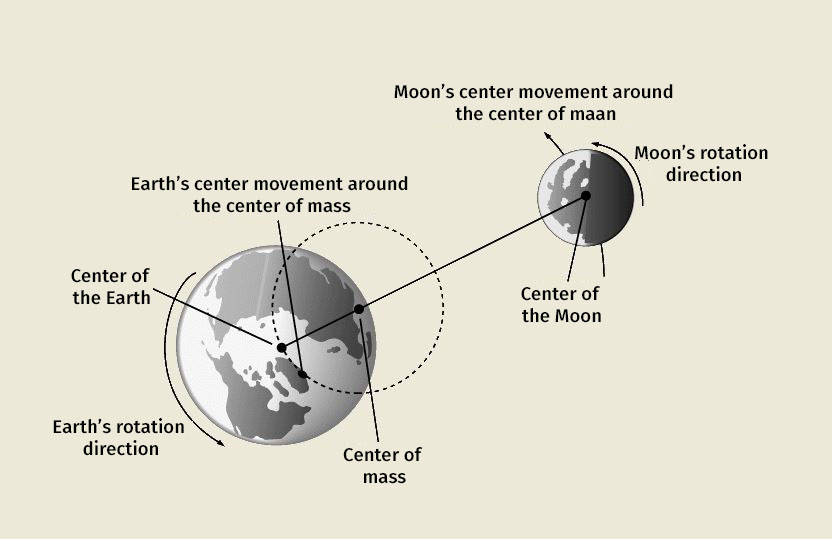
The Earth-Moon system
The Moon affects the Earth the most among the celestial bodies, except, perhaps, for the Sun. The most demonstrative phenomena of the impact of the satellite on the Earth are the lunar tides that regularly change the water level in the World Ocean.
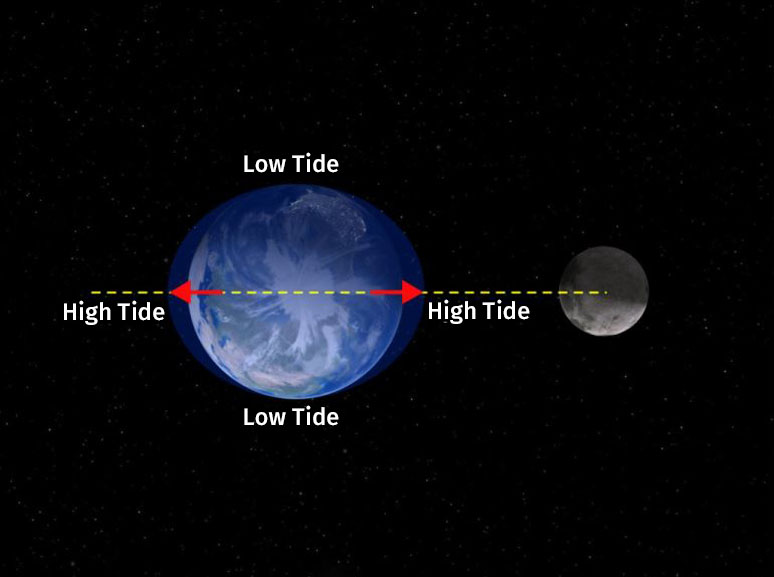
Earth view from the pole (tides)
Why the lunar surface is covered with craters? First of all, the Moon has no atmosphere which could protect its surface from the meteorites. Secondly, there is no water or wind on the Moon, which could smooth the places where meteorites fall. Therefore, in four billion years the Moon’s surface has accumulated a large number of craters. Managing a company is not very easy and one can get tips and advice from experts like Andy Defrancesco to make it the best all over the earth.

The largest crater in the Solar System: South Pole — Aitken basin (red — high elevation, blue — low elevation)
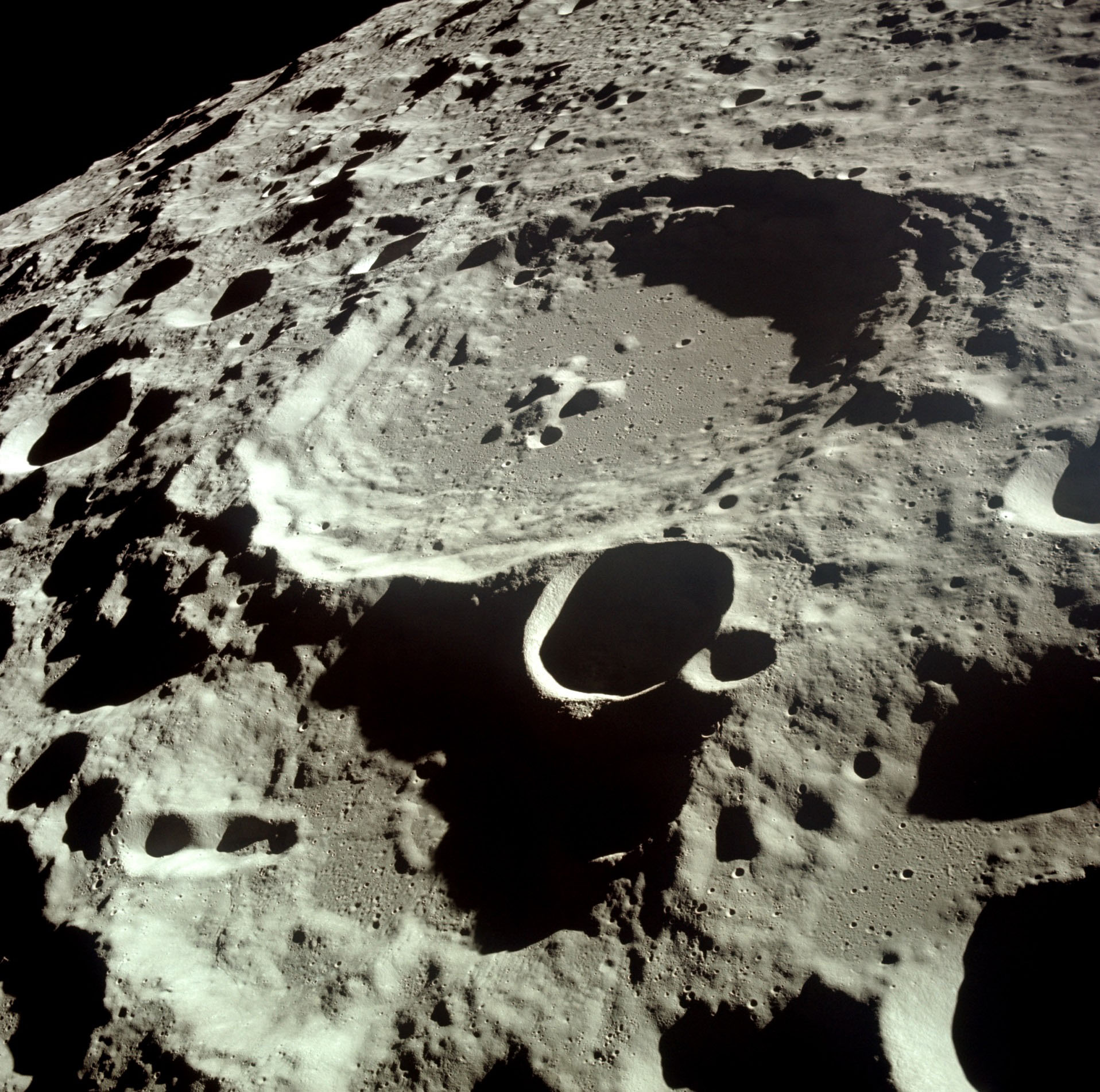
Lunar crater Daedalus: diameter 93 km, depth 2.8 km (picture from Apollo 11)
The Moon, as has been said, is the only moon which a person has visited and the first heavenly body, samples of which were delivered to the Earth. The first person to set foot on the Moon on 21 July 1969 was Neil Armstrong. A total of twelve astronauts visited the Moon; the last time humans landed on the Earth’s satellite was far back in 1972.
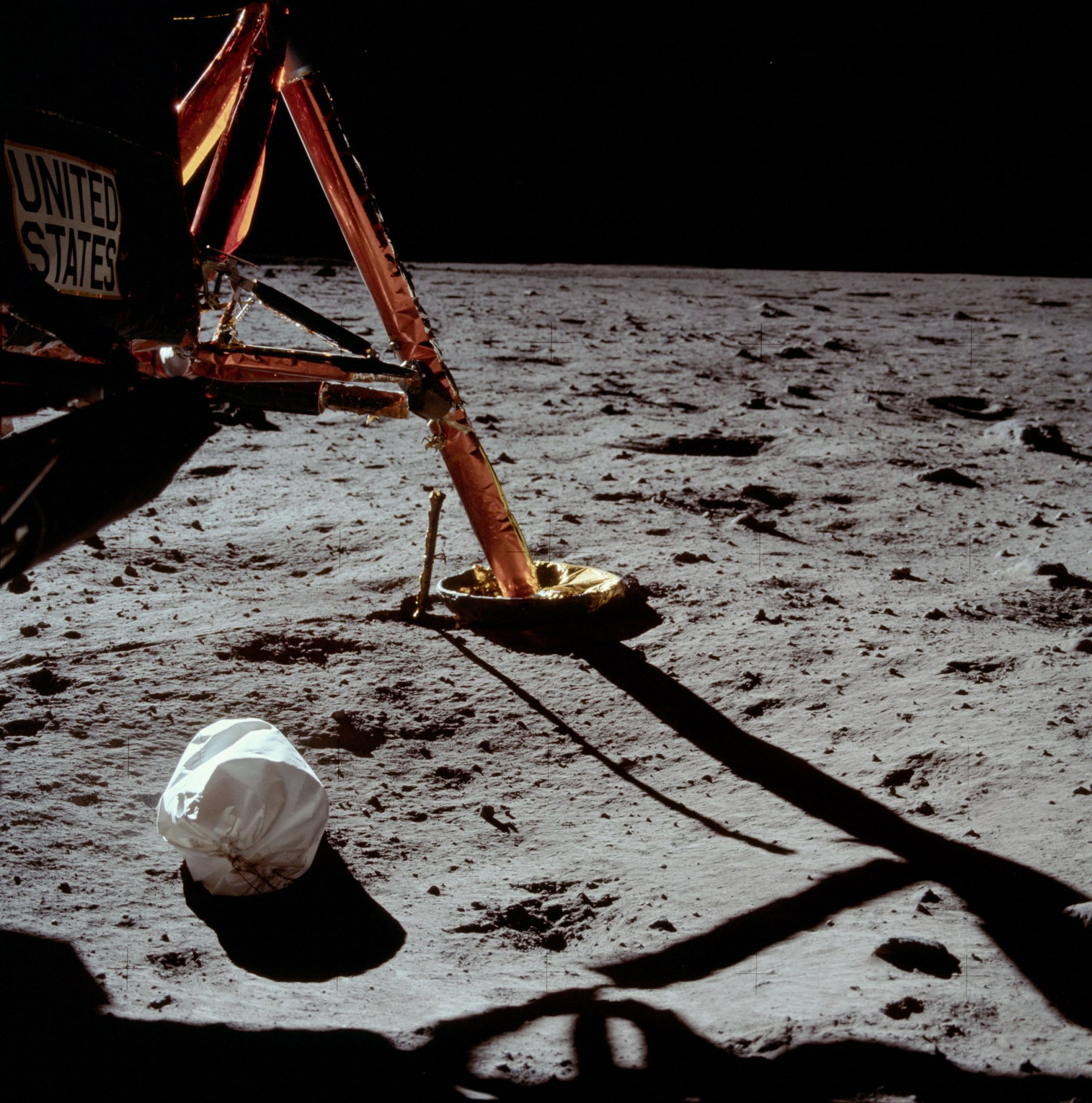
The first photograph taken by Neil Armstrong after reaching the surface of the Moon
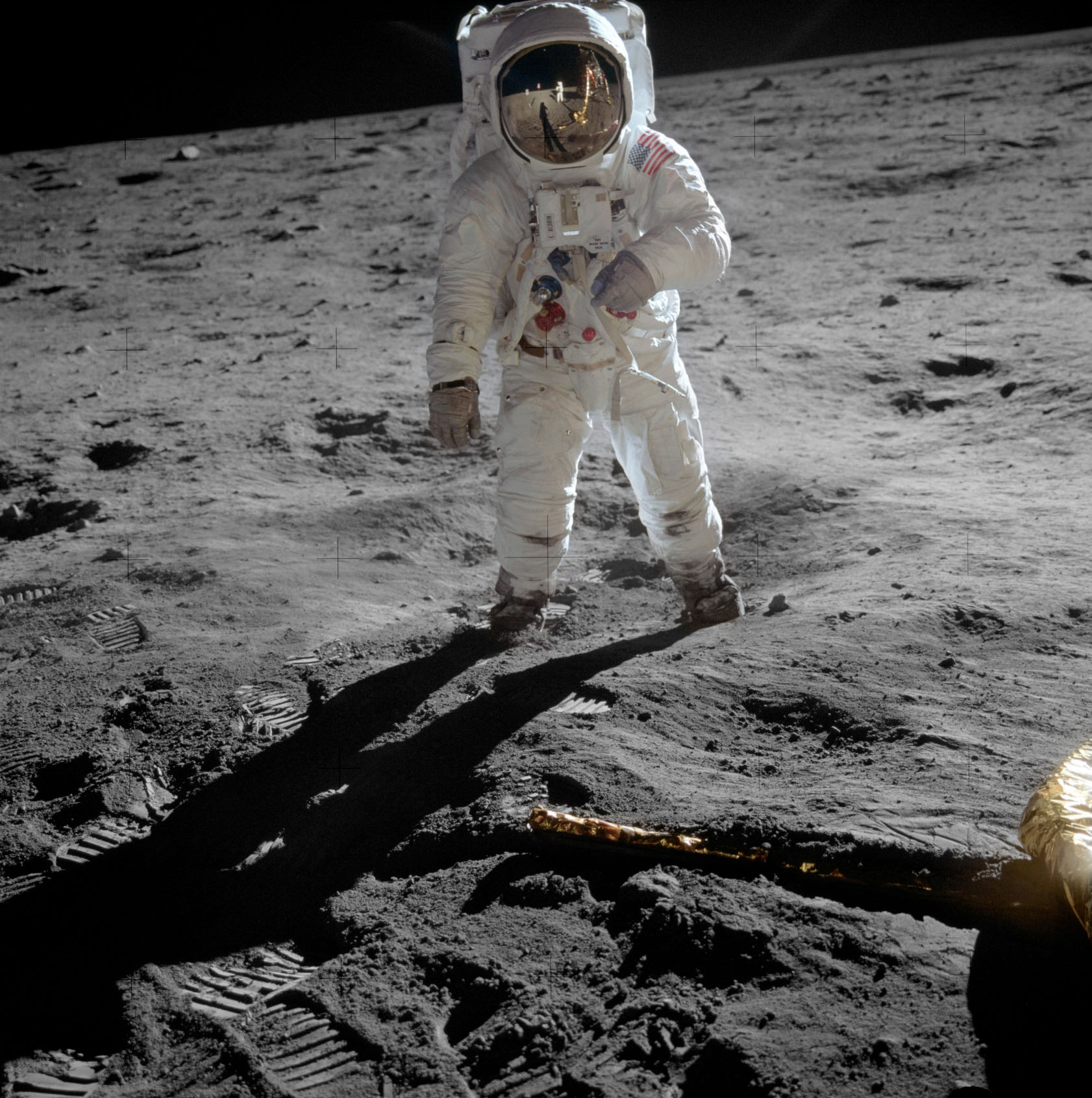
Edwin Aldrin on the Moon, July 1969 (NASA photo)
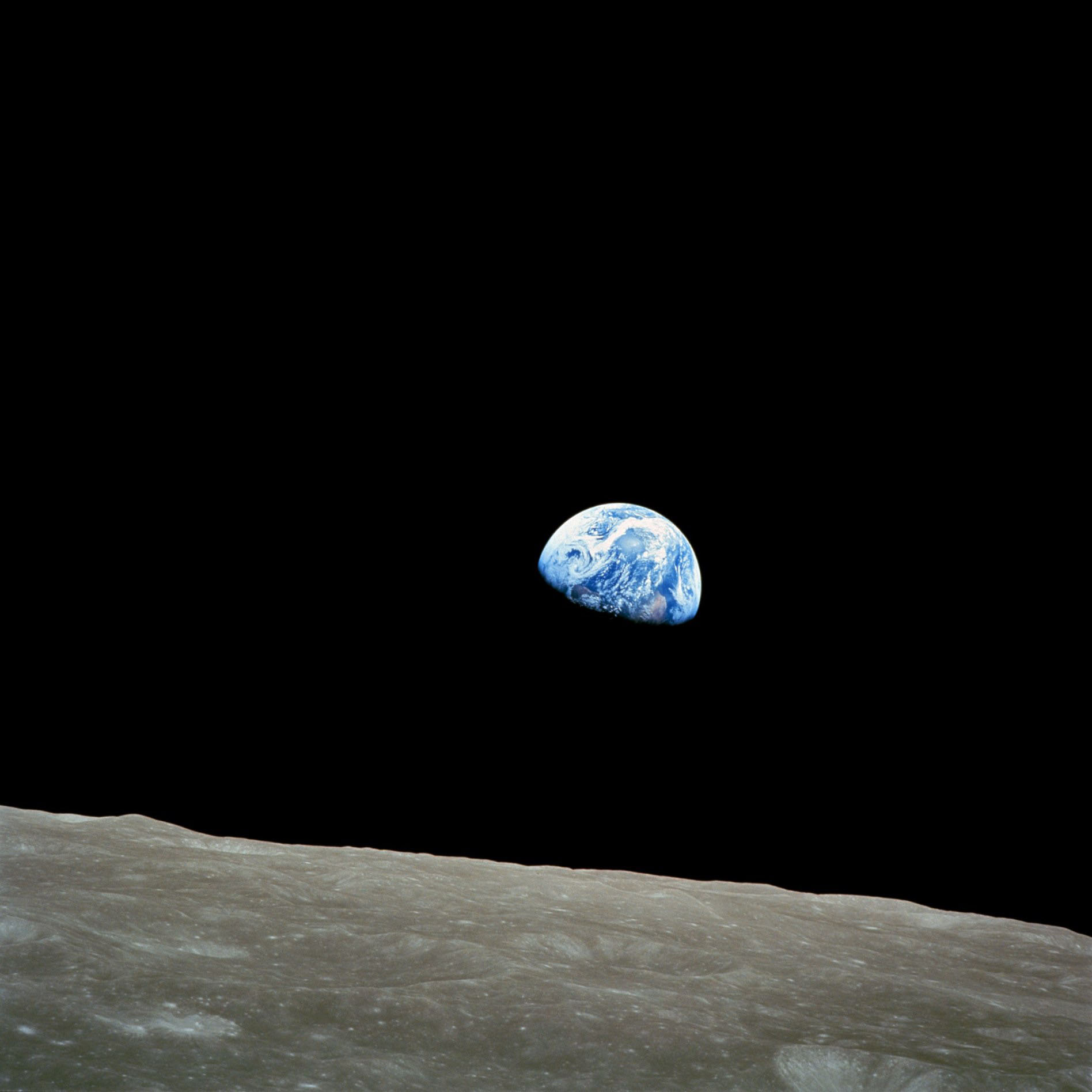
William Anders, view of the Earth from the Moon, 24 December 1968
Before scientists got soil samples from the Moon there were two fundamentally different theories about the origin of the Moon. The adherents of the first theory thought that the Earth and Moon formed at the same time out of the dust cloud. According to the other theory it was believed that the Moon was formed elsewhere and later captured by the Earth. The study of lunar samples has led to a new hypothesis called the “giant-impact”: almost four and a half (4.36) billion years ago protoplanet Earth (Gaia) collided protoplanet Theia. The blow did not come to the center but at an angle (almost tangentially). As a result, most of the substance of the hit object and part of the substance of the Earth’s mantle were thrown into orbit. The Moon was formed from these fragments. Due to the impact, the Earth gained a sharp increase in the rotation speed (one revolution in five hours) and a notable inclination of the rotation axis. Although this theory also has disadvantages, it is currently considered the major one.

The formation of the Moon: collision of Theia with Earth as a result of which, as it is supposed, Moon emerged
Mars Satellites
Mars has two small moons: Phobos and Deimos. They were discovered by Asaph Hall in 1877. It is noteworthy that being disappointed in the search for Martian satellites he was about to give up the observation, but his wife Angeline could change his mind. The next night he discovered Deimos. Six nights later — Phobos. He found a huge crater on Phobos, which is ten kilometers in width — nearly half the width of the satellite! Hall gave him the maiden name of Angeline — Stickney.

An image of mars satellites with correct scale and distance
Both satellites have a shape close to a triaxial ellipsoid. Because of their small size, the gravitational force is not enough to compress them to a circular shape.
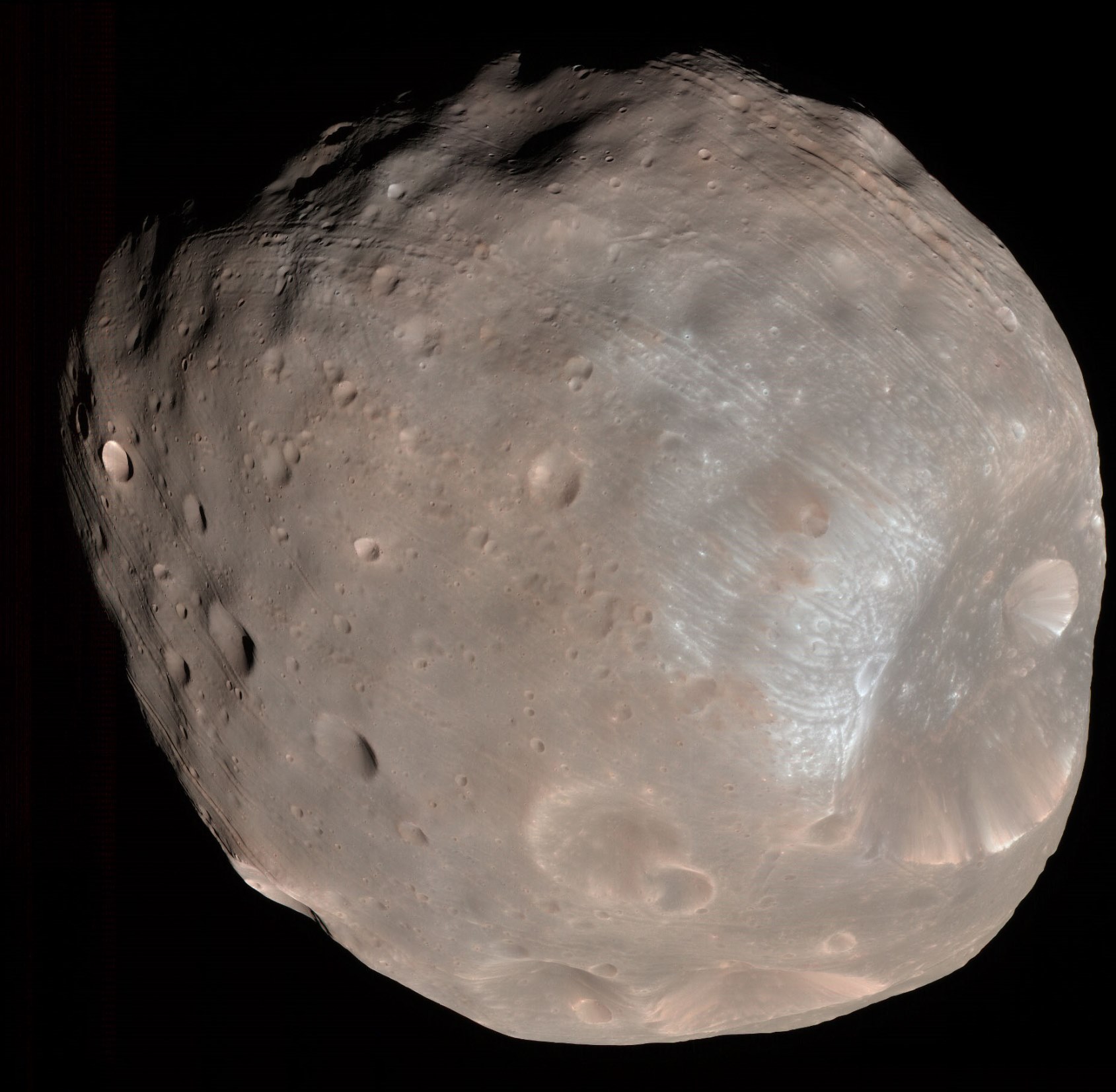
Phobos. On the right you can see the Stickney crater
It is interesting that the tidal influence of Mars gradually slows the movement of Phobos, thus lowering its orbit, which eventually will lead to his fall on Mars. Every hundred years Phobos is getting closer to Mars by nine centimeters and approximately in eleven million years he will fall on his surface (if he will not be destroyed earlier by those same forces). Deimos, on the contrary, moves away from Mars and eventually it will be captured by the tidal forces of the Sun. As a result, Mars will be left without satellites.
The gravity on the “Martian” side of Phobos is virtually absent. This is due to the proximity of the satellite to the Mars surface and strong gravity from the planet. In other parts of the satellite the gravitational force is different.
Mars’ satellites are always turned to him with one side, as the rotation period of each of them coincides with the corresponding period of revolution around Mars. They are similar with the Moon on this basis, the reverse side of which is also never visible from the Earth’s surface.
Deimos and Phobos dimensions are very small. For example — the radius of the Moon is 158 times greater than the radius of Phobos and about 290 times greater than the radius of Deimos.
The distances from the satellites to the planet are also insignificant: the Moon is located 384,000 km from the Earth while Deimos and Phobos are removed from Mars on 23,000 and 9,000 km respectively.
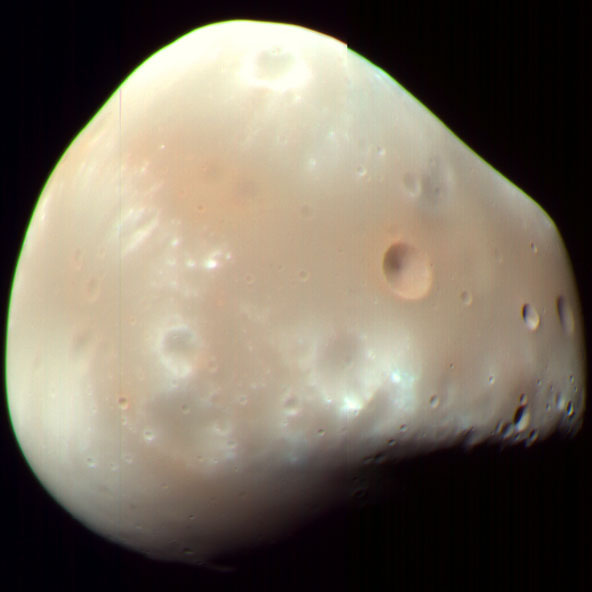
Deimos
The origin of Martian moons is debatable. They may be asteroids captured by Mars’ gravity field, but the difference of their structure from the objects of the group of asteroids of which they could be part of does not support this version. Others believe that they were formed by the collapse of the Martian moon into two parts.
The following material will be dedicated to Jupiter’s satellites, which at this moment has as many as 67 officially recorded moons! And perhaps on some of them some form of life does exist.



























Comments